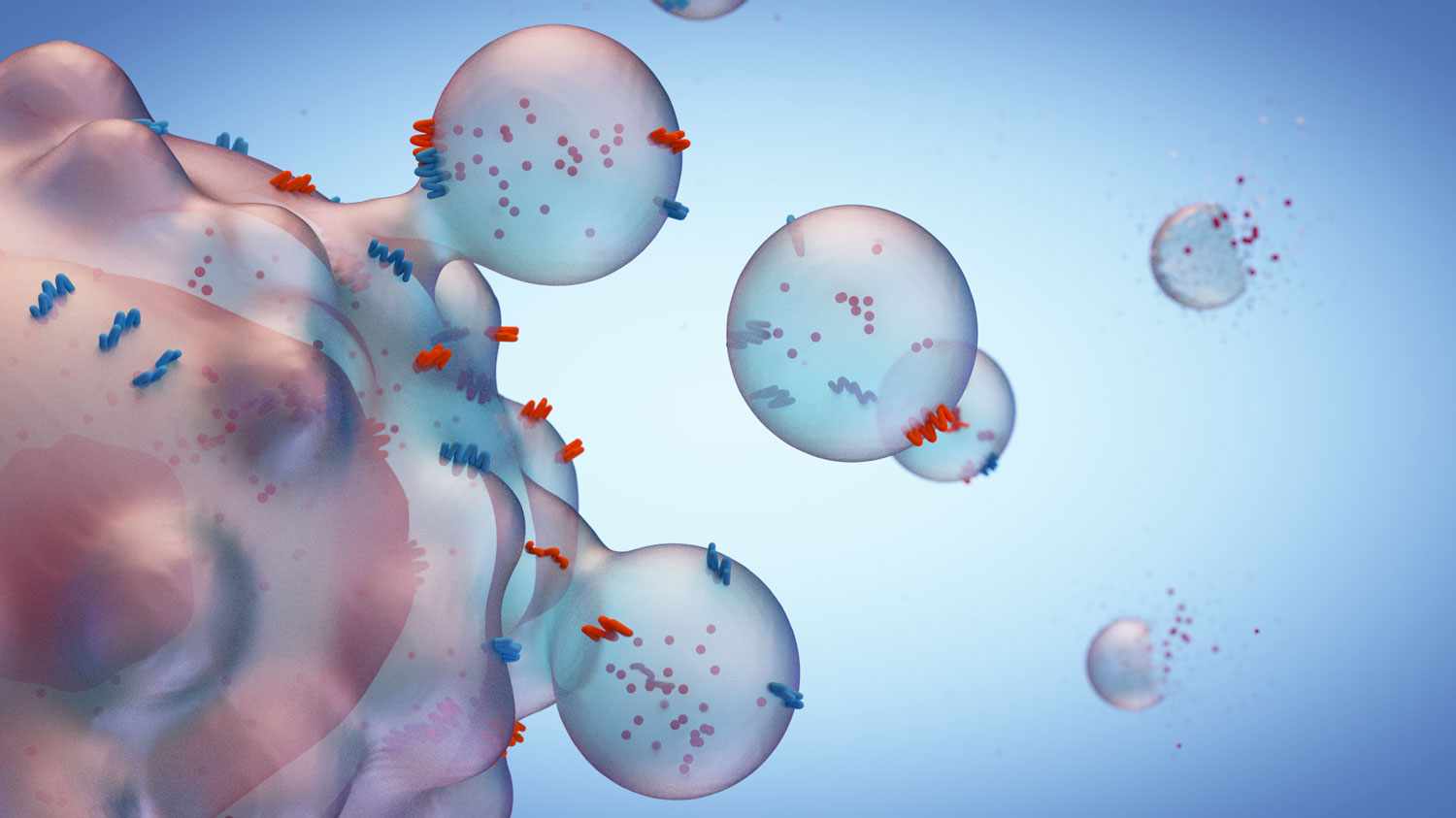Exosomes are extracellular vesicles released from cells that act as shuttles for certain genetic information and proteins to other cells.
Reestablishing the body’s internal balance is the most important part of treatment if you live with a chronic disease, such as Lyme, but the degenerative disease can leave you feeling helpless, with no hope for effective treatment or relief.
Therapy doesn’t always work as expected either, from side effects to no change at all, and you might be left wondering if you’ll be sick for the rest of your life.
If you’re searching for an answer after being diagnosed with Lyme disease, or even if you already tried therapy for Lyme that hasn’t had the effect you expected, there is hope.
Advancements in regenerative medicine have opened up new avenues for treatment with stem cell therapy, but even more, opportunities to use a pinpointed therapy have brought an array of treatment options to the horizon.
These new treatment options are dependent on a minuscule part of our cells, known as exosomes, which may be the next small thing in your hope for healing.
So what are exosomes? Read on to learn more.
Stem Cells and Exosomes
You’ve probably heard of the body’s raw materials or cells from which all other cells with specialized functions are generated, known as stem cells.
These special cells can become bone, muscle, cartilage, and other specialized types of cells, allowing them the potential to assist in healing and repair in a number of diseases, including conditions like Parkinson’s and Alzheimer’s.
Medicine has focused on a number of uses for stem cells, including replacing diseased cells, testing new drugs for safety and effectiveness, and gaining a better understanding of how disease occurs, but there’s even greater potential in their use than ever before.
We’ve always known that cells in the body have the ability to communicate with one another, but research into the multiple uses of ‘exosomes’ has discovered the new potential for disease treatment.
What are exosomes?
Exosomes are extracellular vesicles, or small bubbles, released from cells that act as shuttles for certain genetic information and proteins to other cells, usually in response to injuries.
They allow for cell-to-cell communication, ending up outside of the cells to transport molecules that are important regulators of intracellular information between close and distant cells.
To illustrate this, think of yourself, or the human body, like New York City.
Manhattan is one big organism with individual buildings. These buildings are the cells. All the buildings/cells communicate with each other through small people moving through the streets, and those people are like exosomes.

They carry information from place to place with different functions and purposes. From the top floor, you only see a zoomed-out perspective of tiny dots moving around, but when you go into the streets, you see how complex the people/exosomes really are.
The person/exosome can carry good or bad information, essentially changing the environment inside the building and reaching certain floors in the building other things can’t, just like exosomes.
In short, exosomes are the messengers which tell the cells how and when to react.
Why are exosomes important in the treatment of chronic degenerative disease?
A degenerative disease comes from a continuous deterioration of cells, affecting tissues or organs.
While stem cells are the notable champions in the treatment of neurological diseases, cancers, and immune disorders, pinpointing treatments by focusing on exosomes could have a greater positive effect, rather than solely focusing on the stem cell as a whole.
Exosomes perform a basic function – communication. They may also offer a new way to treat chronic illness, creating a whole new branch of regenerative medicine.
What happens if all humans are infected with a disease? Our bodies break down and our infrastructure requires new, healthy pieces to heal us. Using healthy exosomes derived from young, healthy mesenchymal stem cells could provide new pieces to jumpstart the healing process.
The potential of these exosomes for the treatment of chronic degenerative diseases has increased with scientific advancement since exosomes can be carriers for disease-modifying strategies.
Research has given us valuable insight into the practical functionality of exosomes. It was shown that if we expose the stem cells of an older organism to those of a younger organism we see that exosomes from the young stem cells are responsible for rejuvenating the older cells. This healing mechanism can now be used in regenerative medicine.
Can exosomes help treat my Lyme Disease?
Lyme Disease is a very complex disease, mostly caused by the Borrelia burgdorferi bacteria, which compromises the immune system. The tick-borne disease can also come with multiple co-infections.
The tick bite can occur months or even years prior, but at a certain point, a combination of factors causes the onset of illness as immune system functions become disrupted, much like a pot of water boiling over.
This disruption is often caused by a combination of stress, poor diet, and exposure to toxins, affecting all the systems, diminishing cellular health, immune function, metabolic function and dramatically increasing inflammation, as the pot boils over.
We know that inflammation is a central player in most neurodegenerative diseases as well.
The complex nature of Lyme disease makes cell therapy one of the key treatments available.
Mesenchymal stem cells, which are obtained from bone marrow or adipose (fat) tissue, have been shown to lower inflammation and have an immune-modulatory effect. This effect can assist in establishing homeostasis and resolving persistent Lyme symptoms that don’t respond to conventional therapies.
Stem cell therapy for Lyme Disease also improves the immune system.

Cell therapy is key to re-establishing the body’s regulation capacity in chronically ill patients. While stem cells are considered the body’s building blocks for repair and healing, exosomes are the doing the actual work.
They serve as important messengers that can help in cell optimization, repair processes, and mobilizing the body’s stem cells and healing processes, using them to trigger new processes and transport certain messages across barriers.
Remember that New York City example? Instead of only focusing on the buildings (the cells), changing the spread of the information by the people (the exosomes) can change how Lyme disease spreads and reduce inflammation, among other aspects of the infection.
Regenerative medicine aims to improve the regeneration of damaged, malfunctioning, and missing tissue and organs. While stem cells still serve a crucial purpose, exosomes create an extraordinary opportunity for science to use them as inherent tools for medical intervention and drug delivery – specifically disguising certain drugs through manipulation.
Now through isolation methods, purified exosomes are available for patients as well, taking cell therapy to the next level.
If you need some more information concerning exosome therapy for Lyme Disease, get in touch with us here and receive a free consultation.

